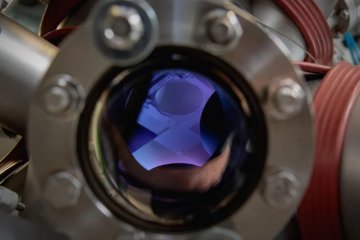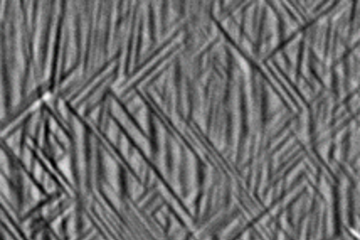All genres
1.
Journal Article
Backside SERS Studies of Inhibitor Transport Through Polyelectrolyte Films on Ag-substrates. Journal of Colloid and Interface Science 357 (2), pp. 480 - 486 (2011)
2.
Journal Article
Wet- and Corrosive De-Adhesion Processes of Water-Borne Epoxy Film Coated Steel I. Interface Potentials and Characteristics of Ion Transport Processes. Journal of the Electrochemical Society 158 (3), pp. C29 - C35 (2011)
3.
Journal Article
Wet- and Corrosive De-Adhesion Processes of Water-Borne Epoxy Film Coated Steel II. The Influence of -Glycidoxypropyltrimethoxysilane as an Adhesion Promoting Additive. Journal of the Electrochemical Society 158 (3), pp. C36 - C41 (2011)
4.
Journal Article
In-situ study of the deterioration of thiazole/gold and thiazole/silver interfaces during interfacial ion transport processes. Journal of Electroanalytical Chemistry 643 (1-2), pp. 94 - 101 (2010)
5.
Journal Article
Electrocatalytic Activity and Stability of Nitrogen-Containing Carbon Nanotubes in the Oxygen reduction Reaction. J. Phys. Chem. C 113 (32), pp. 14302 - 14310 (2009)
6.
Talk
Electrochemical Reaction at noble Metal-Monolayer Interfaces studied by in-situ-backside Surface Enhanced Raman Spectroscopy. ECASIA 2009, Antalya, Turkey (2009)
7.
Talk
In-situ backside surface enhanced Raman study on the reactive wetting process at noble metal-monolayer interfaces supported by SKP, XPS and ToF-SIMS. Kurt Schwabe Symposium 2009, Erlangen, Germany (2009)
8.
Poster
Surface enhanced Raman spectroscopy and Scanning Kelvin Probe studies of corrosive de-adhesion at polymer-metal interfaces. The 59th Annual Meeting of the International Society of Electrochemistry, Seville, Spain (2008)
9.
Thesis - PhD
Combined in-situ spectroscopic and electrochemical studies of interfacial and interphasial reactions during adsorption and de-adhesion of polymer films on metals. Dissertation, Universität Paderborn, Paderborn, Germany (2010)











